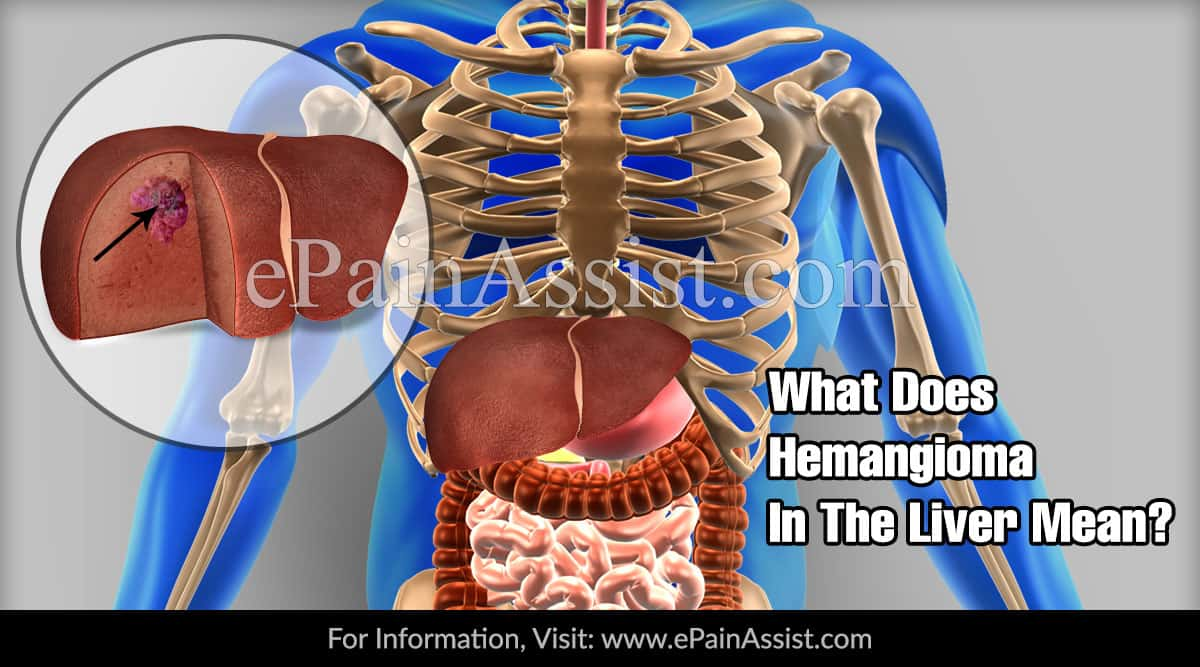What Does Hemangioma in the Liver Mean?
A liver hemangioma is a benign tumor caused due to tangled blood vessels in the human liver. It is also called as hepatic hemangioma or cavernous hemangioma. They do not transform into cancerous tumors and neither do they cause any signs or symptoms. They mostly affect women more than men usually in the age group of 30 to 50 years.
A small liver hemangioma does not cause any symptoms, but if they grow in size (larger than 10 centimeters) they can be significantly symptomatic. The symptoms include pain in the right upper quadrant of abdomen, nausea, vomiting and feeling of fullness even after taking small meals.
The exact cause of liver hemangiomas remain unclear, but they are known to be hereditary i.e., they run in families. They are mostly small in size ranging about 4 centimeters or 1.5 inches in diameter approximately, but they can also grow larger in size. They can also occur in multiple numbers either on or inside the surface of liver. They can also occur in infants and can be life threatening but it is very rare.
The pregnant women are more prone to liver hemangiomas since the estrogen hormone released during pregnancy can trigger the growth of hemangiomas. Also women who are undergoing hormone replacement therapy for menopausal symptoms are also at a risk of developing liver hemangiomas. So, when diagnosed with a liver hemangioma a pregnant women should consult with a doctor about the risks and complications she can encounter during her pregnancy. Also the use of birth control pills can affect the hormone levels in your body so they should be avoided during the presentation of liver hemangiomas.
Hemangiomas are usually diagnosed accidentally when undergoing tests and procedures for another medical condition. A person with liver hemangioma does not usually know they have it since it is mostly asymptomatic. The imaging techniques where liver hemangiomas can be diagnosed include an ultrasound, CT scan and MRI.

Treatment and Management of Liver Hemangiomas
If the liver hemangioma is small it can be left as it is because it will not cause any signs or symptoms. A check on its size is necessary since larger hemangiomas may cause significant problems and complications. The treatment depends on the location and size of the hemangioma and the overall health of the patient.
The treatment options include steroid injections to shrink the size of tumor. Surgeries can also be performed to remove the mass if it can be easily separated from the liver. In other cases where the mass cannot be separated a portion of liver might also be removed along with the hemangioma.
Other procedures include hepatic artery ligation where the main artery is ligated to restrict flow to the hemangioma that will shrink the tumor and destroy the tumor cells. The liver hemangiomas may grow in size if they have adequate blood supply to it. The other method includes the arterial embolization where a medication is injected into the artery supplying the tumor, which blocks its flow and therefore kill the tumor cells and reduce its size. The nearby liver structures remain healthy as this procedure does not compromise the blood flow to other surrounding structures.
In very rare cases where the hemangiomas are unusually large (more than 10 centimeters) and multiple in number they may require a liver transplant since they cannot be treated by any other methods and techniques. The patient’s liver is replaced with the donor’s healthy liver.
Radiation therapy is also used in very rare cases to shrink the tumor but it is not available in most centers and its effectiveness and safety still remains questionable.
In the long run the prognosis of liver hemangiomas is good and a person can lead a long healthy life. A person needs to take care of their liver and avoid any kind of trauma and lifestyle that may harm the liver. Restriction of alcohol and tobacco along with check on obesity is helpful.
Also Read:
